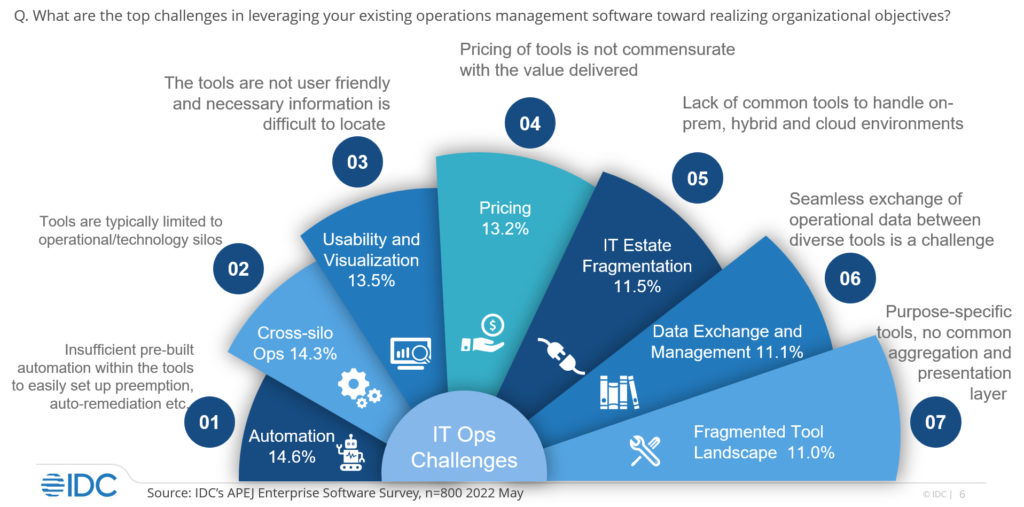Over the last few years, automation has steadily risen to the top of enterprise priorities. The IDC report, Asia/Pacific Perspectives and Adoption Trends for Intelligent Automation 2022, revealed that enterprises in Asia/Pacific are challenged to optimally leverage their IT operations management solutions toward realising organisational objectives.


Enterprises in the region are looking to scale their automation initiatives and this is driving automation across diverse horizontal and industry-specific business processes.
Pushkaraksh Shanbhag, associate research director for IT Services, IDC Asia/Pacific, says automation is a top priority for organisations in the Asia/Pacific region.
What enterprises want
IDC’s enterprise end-user survey-led research suggests that a modular architecture for customisable, mix-and-match consumption, automation capabilities across both IT operations and business processes, and full-stack capabilities that span the breadth of the automation spectrum (process mining, computer vision, RPA, AI/ML, and reporting and governance) are the most prized capabilities in automation solutions.
While process areas with the most mature processes and repetitive tasks (procurement, enterprise asset management, etc.) top automation priority lists, enterprises are beginning to actively automate areas like financial strategy and performance management, human capital management (HCM), project and portfolio management (PPM) and even sales.
Country nuances
The report revealed that the Australian market demonstrates a strong Line of Business (LoB) influence in IT decision-making which is driving enterprises to seek automation solutions that straddle both IT operations and business processes to drive tangible value and business outcomes.
Among Singaporeans firms, the market is driven by practical considerations about automation solutions – such as security and assurance, a rationalised solution portfolio, and need-based adoption of capabilities (modules).
Disappointment
Shanbhag acknowledged that enterprise perception of the role of automation has rapidly evolved.
“It (automation) is no longer viewed purely as a mechanism for cost management or productivity enhancement, but as an organisational enabler that supports multiple business priorities – enhanced resilience, increased business agility, improved customer and employee experience, and mitigation of the impact of skills shortages, to name a few,” he concluded.





